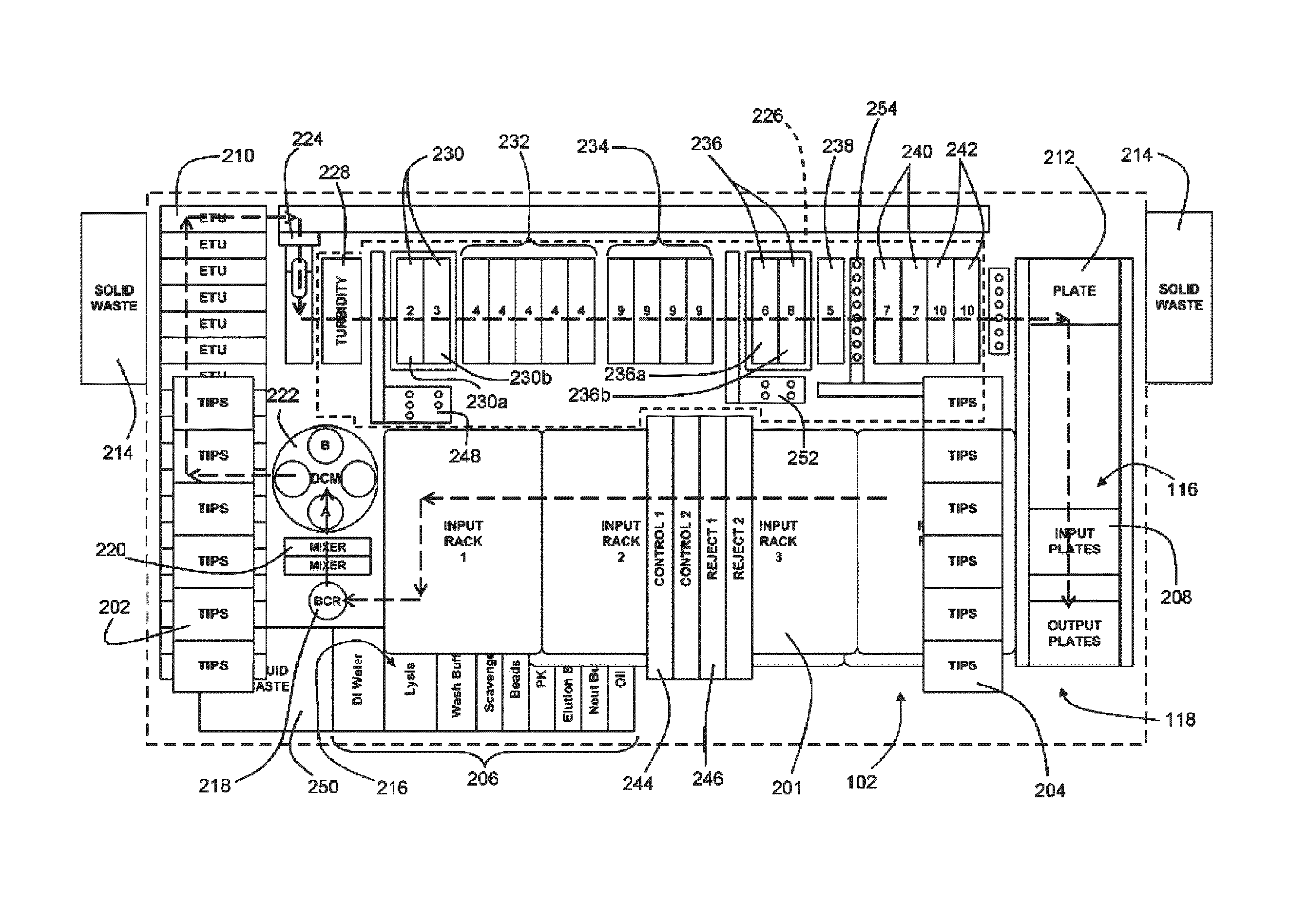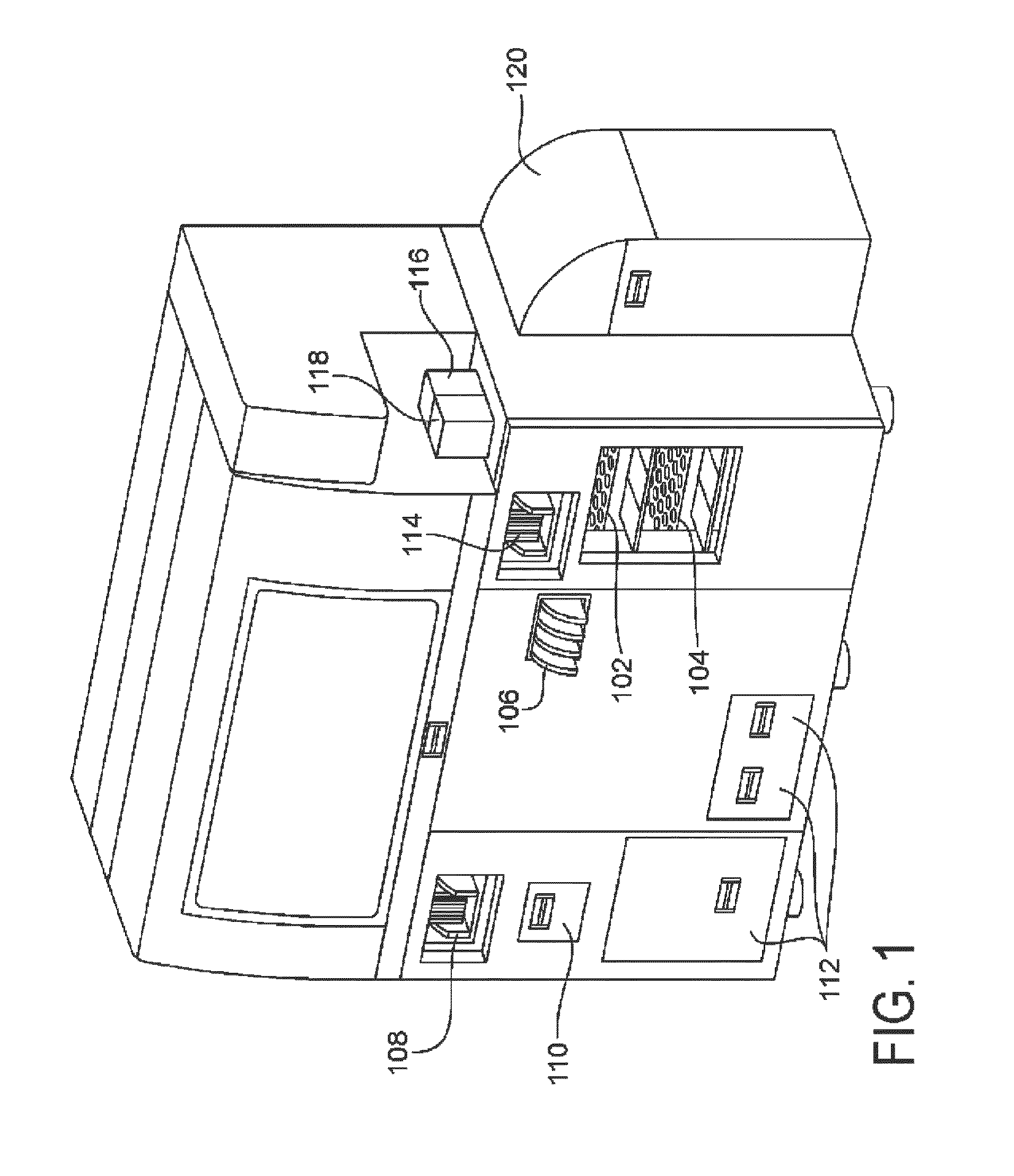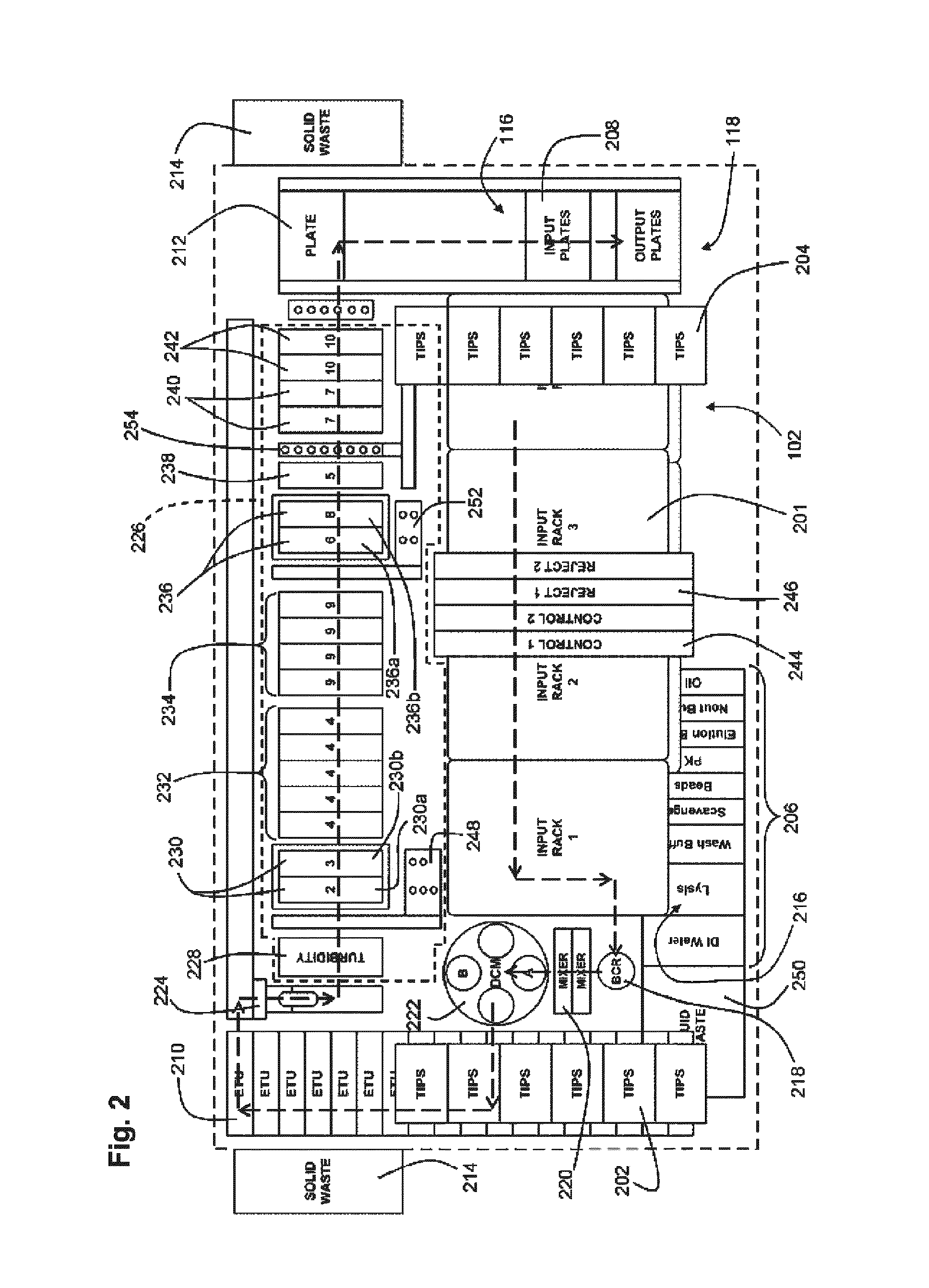Automated assay and system
a sample processing system and automatic technology, applied in the field of automatic sample processing systems, can solve problems such as identity loss, operator error, and improper testing of systems
- Summary
- Abstract
- Description
- Claims
- Application Information
AI Technical Summary
Benefits of technology
Problems solved by technology
Method used
Image
Examples
example 1
Clinical Example 1
[0193]An exemplary embodiment was operated to process liquid based cytology specimens using Qiagen's Next Generation Hybrid Capture® High Risk assay. The system was adapted to accommodate specimens in PreservCyt® (PC) medium in the existing Hybrid Capture 2 (HC2) assay, which requires sample volumes of 4 mL. The pre-analytical system was developed to produce up to ten 96-well plates of extracted DNA in less than 5 to 6 hours for subsequent analysis in the Next Generation Hybrid Capture Assay® (NGA) (see U.S. Provisional Application 61 / 108,687 filed Oct. 27, 2008). From system start-up, the first fully processed plate was produced in 59 minutes with subsequent plates available every 24 min. The objective for this study was to compare manual nucleic acid extraction method from 1 ml of PC samples with the high-throughput automation method for recovery, carryover, throughput and reproducibility of HPV DNA processed.
example 2
Clinical Example 2
[0197]A fully automated Next Generation Hybrid Capture® HPV DNA assay was performed on an automated analytical system. It was found that the analytical sensitivity for the automated system was 1875 copies (95% CI 1615-2290) of HPV 16 plasmid, as compared to 1950 copies (95% CI 1650-2800) of HPV 16 plasmid in the manual assay. Assay specificity was evaluated with 22 HPV LR types in the Next Generation Hybrid Capture Assay® (NGA) (see co-pending provisional application 61 / 108,687 filed Oct. 27, 2008, which is incorporated by reference herein) assay and compared to the current HC2 HPV DNA Test. All 22 HPV LR types were tested at a high concentration of 2.0 ng / mL. Results of the analytical testing show that the number of HPV low risk types that cross-hybridize with the NextGen assay is significantly reduced as compared to HC2 assay. Clinical specimens with 30% prevalence rates were used to evaluate the performance between the automated system and manual assays. The tot...
example 3
Clinical Example 3
[0199]In this study evaluated a novel extraction protocol that is compatible with various collection media and amenable to high throughput automation. A standard and reproducible HPV DNA test method that uses residual samples from SurePath media has not been previously reported. Most methods use cumbersome procedures and longer lysis incubation time, which is not suitable for high volume lab workflow. The desired extraction chemistry preferably takes no more than about 60 minutes for processing 96 samples and may be compatible with the ultra-high throughput next generation Hybrid Capture® system QIAensemble SP from Qiagen. A universal extraction chemistry protocol was developed for use with both PerservCyt and SurePath liquid based media.
[0200]In this study, the novel sample processing chemistry was evaluated against the industry standard: Digene Hybrid Capture® 2 High-Risk HPV DNA Test® method. HPV16 positive SiHa cells (20,000 cells) were spiked into 4 mL of nega...
PUM
| Property | Measurement | Unit |
|---|---|---|
| time | aaaaa | aaaaa |
| time | aaaaa | aaaaa |
| time | aaaaa | aaaaa |
Abstract
Description
Claims
Application Information
 Login to View More
Login to View More - R&D
- Intellectual Property
- Life Sciences
- Materials
- Tech Scout
- Unparalleled Data Quality
- Higher Quality Content
- 60% Fewer Hallucinations
Browse by: Latest US Patents, China's latest patents, Technical Efficacy Thesaurus, Application Domain, Technology Topic, Popular Technical Reports.
© 2025 PatSnap. All rights reserved.Legal|Privacy policy|Modern Slavery Act Transparency Statement|Sitemap|About US| Contact US: help@patsnap.com



